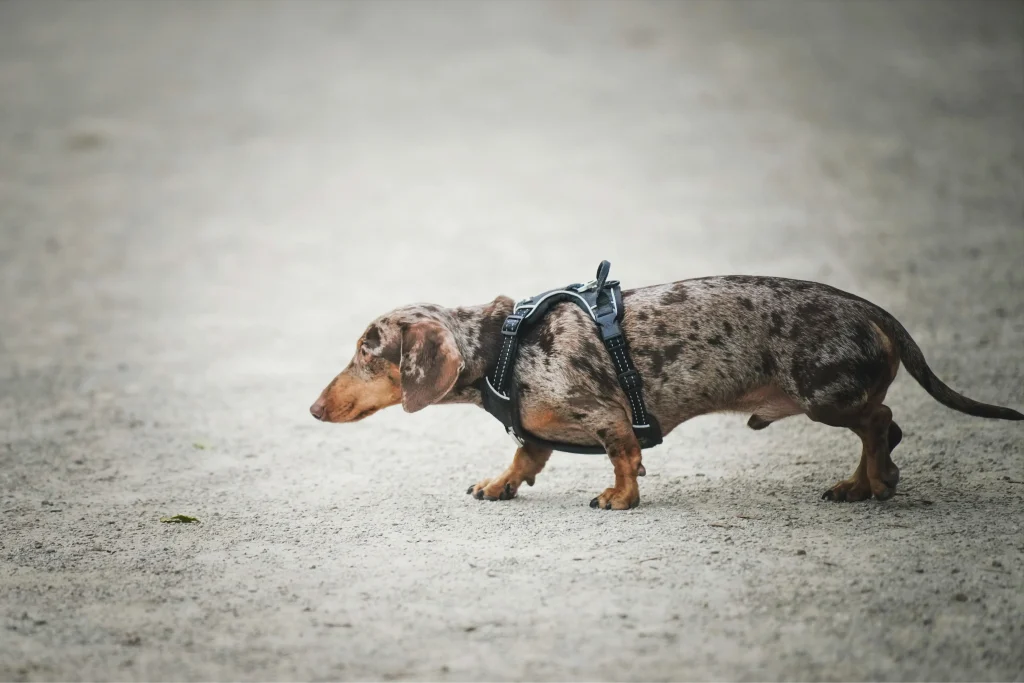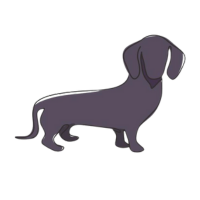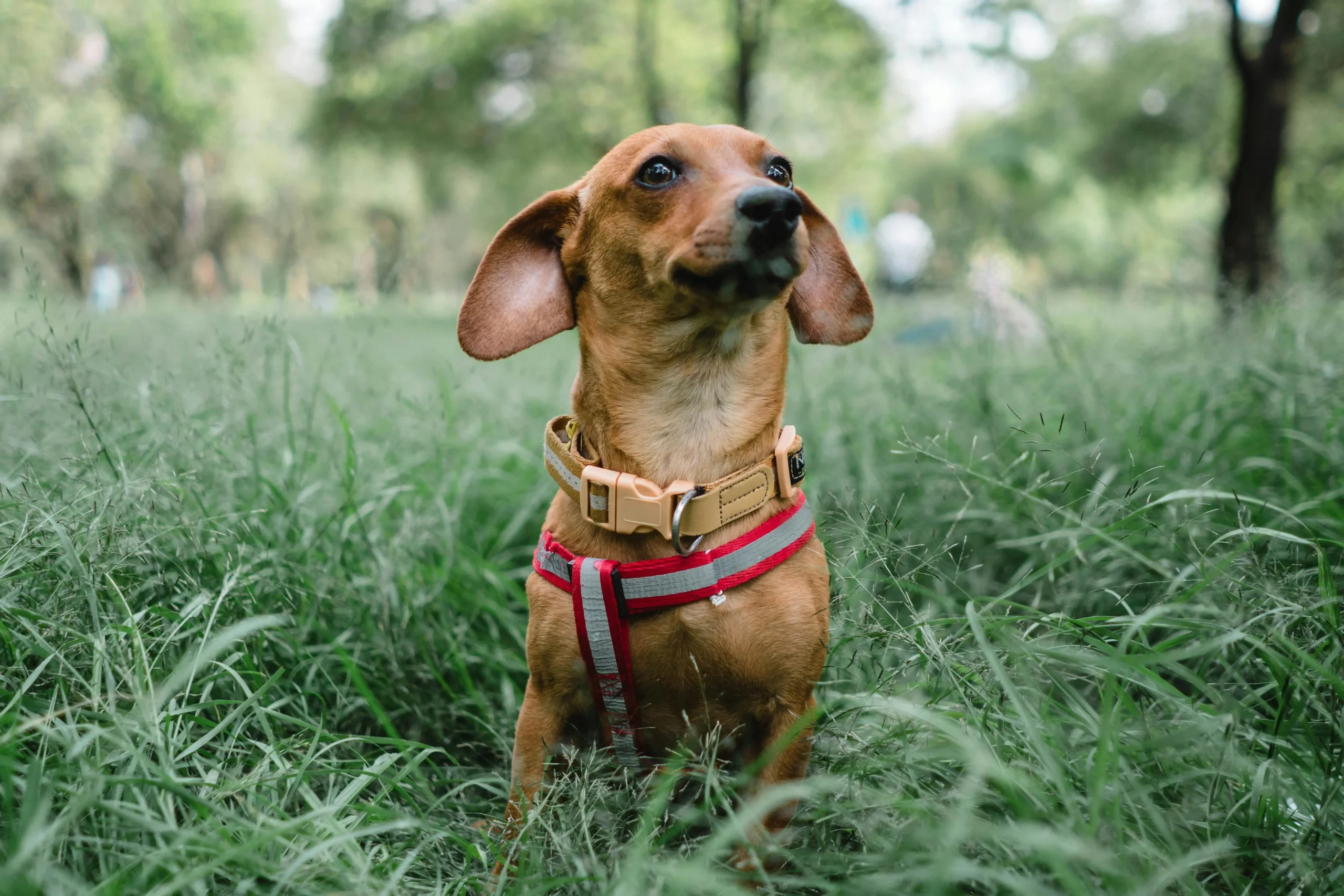Key Takeaways
Key Facts About Dachshund Breed Standards
Breed Recognition
AKC First Recognition: 1885
Global Population: 3.5 million
Annual Registrations: ~40,000
Size Variations
Standard Weight: 16-32 pounds
Miniature Weight: Under 11 pounds
Height: 8-9 inches at shoulder
Genetic Health
Common Issues:
– IVDD (19-24% lifetime risk)
– Genetic Diversity Score: 0.65
– Recommended Health Screenings
Coat Varieties
Types: Smooth, Wire-haired, Long-haired
Colors: Red, Black and Tan, Dapple
Most Common: Red (53%)
Historical Purpose
Origin: Germany, 15th century
Original Purpose: Badger hunting
Name Meaning: “Badger Dog”
Understanding the Dachshund Breed Standard
Dachshunds are unique dogs with a rich history and specific breed standards. The American Kennel Club (AKC) has carefully defined what makes a true dachshund. These little dogs have captured hearts worldwide with their distinctive long body and short legs.
Historical Background of Dachshunds
The dachshund originated in Germany as a hunting dog. Their name literally means “badger dog” in German. Hunters bred these dogs to dig into badger dens and flush out prey. I’ve always been fascinated by how such a small dog could be so brave and determined.
Breed Origins
Originated in Germany as badger hunting dogs in the 15th century
Global Population
Approximately 3.5 million purebred dachshunds worldwide
AKC Recognition
First recognized by AKC in 1885, with 500 championship titles awarded annually
Genetic Diversity
Genetic diversity score of 0.65, indicating moderate genetic variation
Physical Characteristics
Body Structure
Dachshunds have a long body with short, powerful legs. The AKC breed standard emphasizes their unique silhouette. Their body should be long and low to the ground. This distinctive shape allows them to move through underground tunnels with ease.
Size Specifications
The breed comes in three size varieties:
- Standard (16-32 pounds)
- Miniature (11 pounds and under)
- Toy (in some registries)
Interestingly, the AKC first recognized dachshunds in 1885, establishing clear size guidelines. The ideal body length should be 1.5 to 2 times the dog’s height, typically measuring 8-9 inches at the shoulder. This unique proportional requirement sets dachshunds apart from other breeds.
Key Facts About Golden Retrievers
Appearance
Body: Strong and muscular with a wavy coat.
Coat Colors: Golden, Cream, Dark Golden.
Personality
Traits: Friendly, intelligent, devoted, and reliable.
Challenges: Requires regular exercise and mental stimulation.
Health
Common Issues:
– Hip dysplasia
– Heart problems
– Skin allergies
Exercise Needs
Daily: 1-2 hours.
Best Activities: Fetch, swimming, agility training.
Avoid: Prolonged inactivity.
History
Origin: Scotland, 19th century.
Purpose: Retrieving game during hunting.
Modern Role: Loyal family companion and service dog.
Coat Types and Variations
The AKC recognizes three distinct coat types:
- Smooth-haired
- Wire-haired
- Long-haired
Each coat type has its own specific standard for texture and appearance. Remarkably, only 22% of dachshunds fully meet the breed’s strict coat standards. The coat variations are not just aesthetic choices but deeply rooted in the breed’s hunting heritage. Wire-haired varieties, for instance, were developed to provide extra protection during hunting in rough terrain.
Color Standards
Dachshund Color Genetics: A Visual Guide
Red
53% of Dachshunds
Most Common Color
Black and Tan
Classic Breed Combination
Traditional Hunting Colors
Chocolate and Tan
Rare Genetic Variation
Unique Coat Pattern
Dapple
Mottled Coat Pattern
Distinctive Genetic Marker
Brindle
Striped Coat Appearance
Complex Genetic Inheritance
Genetic Diversity
Genetic Diversity Score: 0.65
Moderate Genetic Variation
Recognized dachshund breed standards include multiple color variations:
- Red (most common, approximately 53% of dachshunds)
- Black and tan
- Chocolate and tan
- Dapple
- Brindle
The AKC recognizes 12 official color combinations. Interestingly, pure white is disqualified from breed standards. Color plays a crucial role in breed identification, with specific genetic markers determining acceptable color patterns.
Temperament Requirements

Dachshunds should display:
- Courage
- Intelligence
- Curiosity
- Playful nature
Their personality is as important as their physical characteristics in the breed standard. These dogs were bred to be fearless hunters, a trait that still shines through today. Despite their small size, they possess an incredible amount of confidence and determination.
Movement and Gait
The ideal dachshund moves with:
- Smooth stride
- Effortless movement
- Balanced body positioning
Their unique body structure requires a specific movement pattern. Judges in dog shows carefully evaluate the dog’s gait, looking for a fluid motion that reflects their hunting origins. A proper dachshund should move with purpose and precision.
Health Considerations
Responsible breeders follow AKC standards that prioritize:
- Genetic health screening
- Avoiding hereditary issues
- Maintaining breed integrity
Health statistics reveal critical insights. Dachshunds have a 19-24% lifetime probability of Intervertebral Disc Disease (IVDD), primarily due to their unique body structure. About 87% of responsible breeders now conduct comprehensive genetic health tests to minimize these risks.

Breeding and Reproduction Standards
Breeding dachshunds requires:
- Careful genetic selection
- Health certifications
- Adherence to AKC guidelines
The global purebred dachshund population stands at approximately 3.5 million. Breeding standards are stringent, with only a small percentage of dogs meeting full breed requirements. Genetic diversity is carefully managed, with an average genetic diversity score of 0.65.
Training and Socialization
While small, dachshunds need:
- Consistent training
- Early socialization
- Mental stimulation
Their hunting background makes them intelligent but sometimes stubborn. Training should be patient and positive, leveraging their natural curiosity and desire to please.
Show Ring Expectations
Dachshunds in competitions must meet strict AKC breed standards for:
- Conformation
- Movement
- Overall appearance
Approximately 500 championship titles are awarded annually. Disqualification reasons typically include:
- 45% body proportion issues
- 30% coat inconsistencies
- 25% color variations
Read More:
Frequently Asked Questions
What is the breed standard for a dachshund?
The AKC breed standard requires a long, low-built dog with a muscular body and distinctive short legs. Dachshunds must have one of three recognized coat types and meet specific color and physical measurements.
What makes your dog eligible for AKC registration?
Eligibility requires purebred parents registered with the AKC, passing health screenings, and conforming to breed-specific physical characteristics. The dog must meet precise standards for size, coat, and temperament.
What is the AKC standard weight for dachshunds?
Standard Dachshunds weigh 16-32 pounds, while Miniature Dachshunds weigh 11 pounds and under. These weight categories are strictly defined by the AKC breed standards.
How do you know if your dachshund is purebred?
Confirm purebred status through AKC registration papers, professional genetic testing, and matching all breed standard physical characteristics. A reputable breeder can also provide verified documentation.
How do you tell what type of dachshund you have?
Identify your dachshund by its coat type (smooth, wire-haired, long-haired), size (standard or miniature), and specific color pattern. Physical characteristics and professional breed evaluation can also help determine the type.
What is the most common illness in Dachshunds?
Intervertebral Disc Disease (IVDD) is the most prevalent health issue, affecting 19-24% of dachshunds. This condition is directly related to their unique body structure.
How are Dachshunds different from other dogs?
Dachshunds have an exceptionally long body relative to height and were originally bred for underground hunting. They possess a unique movement, distinctive hunting background, and a highly intelligent, independent personality.
What are the characteristics of a standard Dachshund?
Standard dachshunds have a long, muscular body with short, powerful legs and a courageous temperament. They typically weigh between 16-32 pounds and retain strong hunting dog instincts.
Is a standard Dachshund considered a small breed?
Standard dachshunds are considered a medium-small breed, while miniature dachshunds are classified as a small breed. Their unique body proportions set them apart from typical breed classifications.
How smart are Dachshunds compared to other breeds?
Dachshunds rank around 49th in canine intelligence, demonstrating strong problem-solving skills. They are independent thinkers, which can sometimes translate to apparent stubbornness.
What should I look for in a Dachshund breeder?
Seek breeders who conduct comprehensive genetic health screenings, provide AKC registration documentation, and demonstrate deep knowledge of breed standards. The best breeders prioritize dog welfare and offer transparency.
What should be considered when breeding dogs?
Breeding considerations include genetic health screening, breed standard compliance, and maintaining genetic diversity. Responsible breeding focuses on physical and temperamental fitness.
What questions should I ask a Dachshund breeder?
Ask about health clearance documents, genetic testing, parent information, vaccination history, and any known health issues in the lineage. A reputable breeder will be open and transparent about these details.







